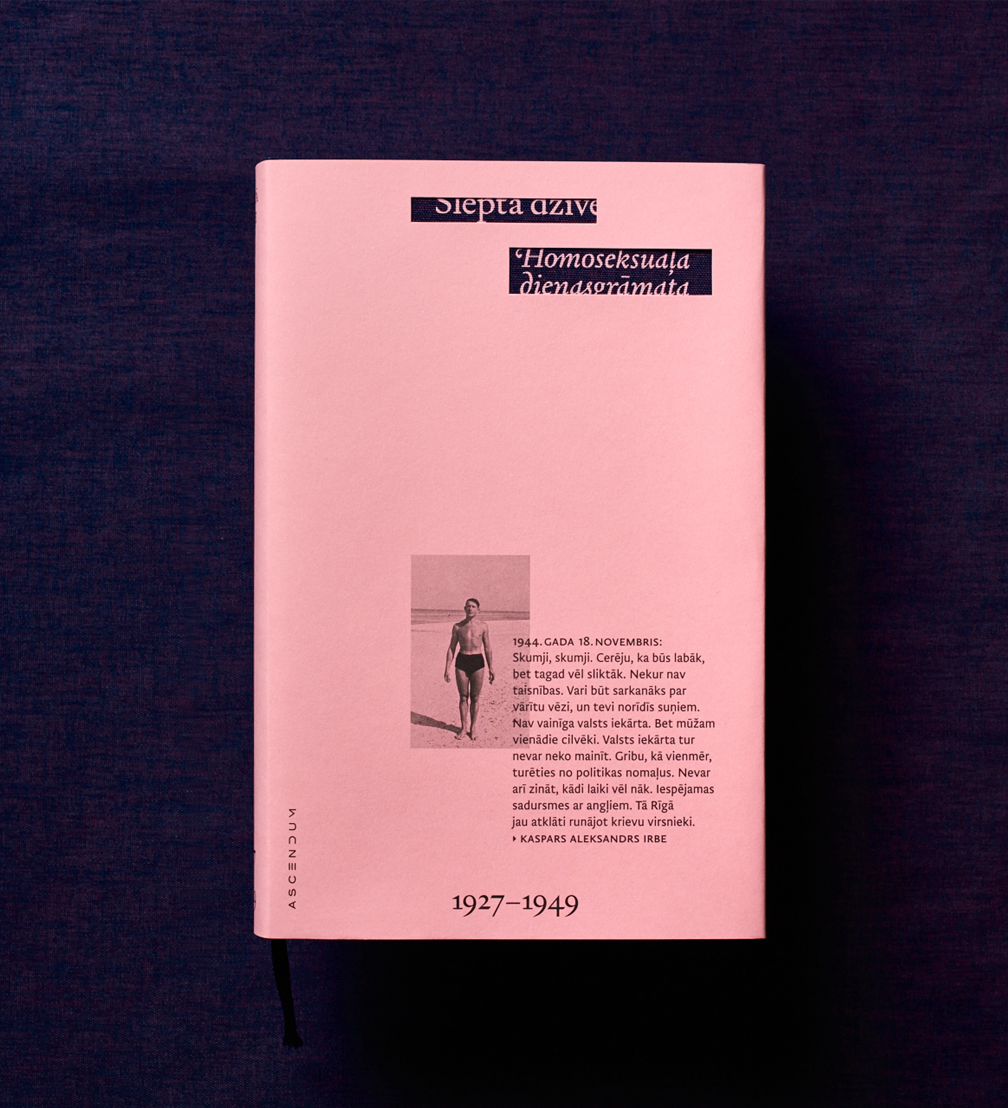
The association Ascendum, in collaboration with the LGBT+ alliance Mozaīka, kas published the first volume of the diaries of Kaspars Aleksandrs Irbe, a long-term resident of Jūrmala. His journals track his whole life of nearly 70 years, making it a unique historical material, whose existence was revealed to the wider public only after the author’s death. Being a gay man, Irbe kept his diaries a secret.
The memories of Kaspars Aleksandrs Irbe allow the reader to get a glimpse into the poorly documented life of the Latvian LGBT+ community during the Soviet years, but not only that. His journals contain testimonies regarding the cultural and social processes and day-to-day events of his time, as well as key historical events: founding of the Latvian state, Soviet and German occupations, deportations, and the restoration of an independent state. Irbe’s diaries document the hidden life in Soviet Latvia and create an impression of a living history, embodied in personal experience.
The first volume of Irbe’s archive, Hidden Life. A Homosexual’s Diary 1927–1949 (Slēptā dzīve. Homoseksuāļa dienasgrāmata 1927–1949), is the result of a close cooperation between the editor in chief Ineta Lipša, editors and revisers Arturs Hansons and Jānis Kulmanis, as well as the award-winning graphic designer Alexey Murashko. In this project, purely aesthetic choices are surpassed by the accurate treatment of Irbe’s archival materials, creating a book that is not only beautiful, but, more importantly, legible and accessible to the reader. Irbe often returned to his journals several decades later, censoring himself, adding underlines and markings and even dating his own comments. This creates a complex structure of the text, which is fully preserved in the book by creating a unique set of designations. It completely transfers the text-organising syntax used in the diaries, supplementing it with explanations from the scientific editor and adding around 900 comments that elucidate on the historical context.
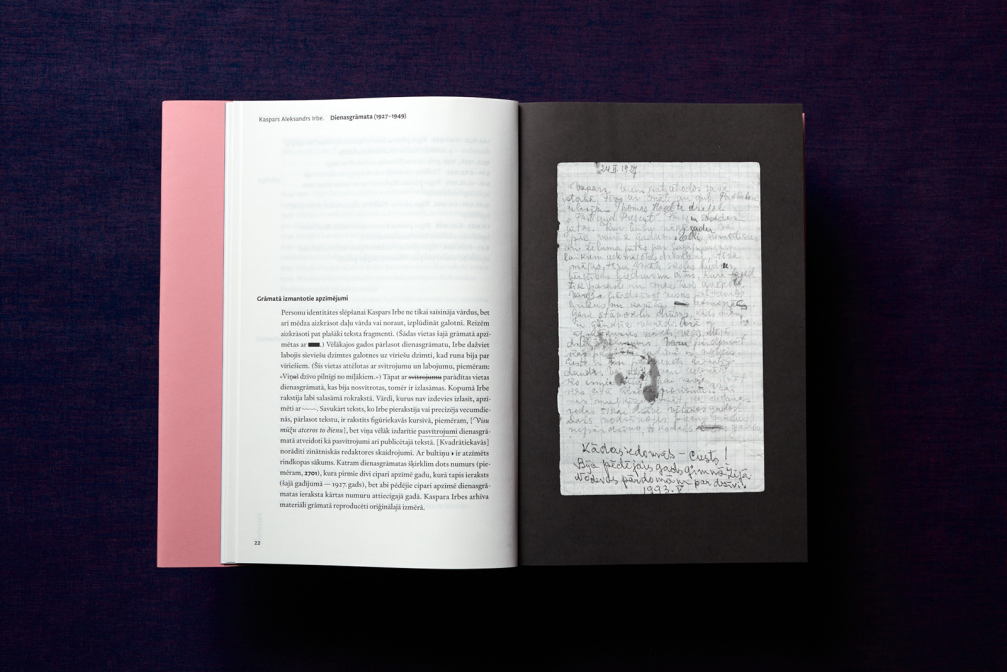
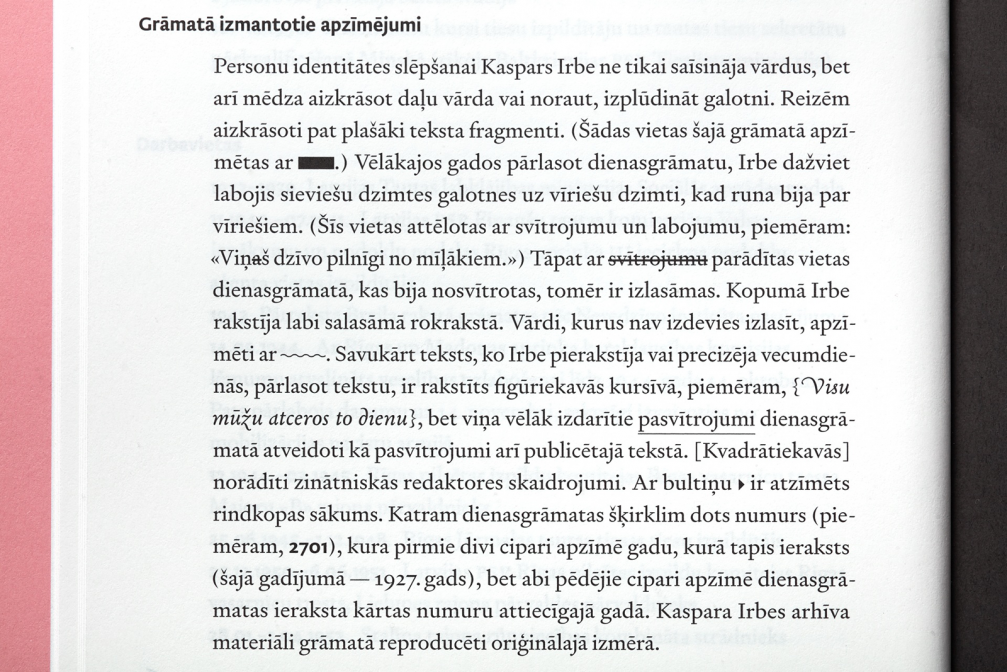
To help guide the reader through the homogenous text, which is essentially a stream of consciousness, all journal entries are numbered, indicating the year of creation and the order number. This system of numeration also allows references to the text from the thematic index, which catalogues key events and topics — from food cards, illegal trade and gay marriages, to the beginning of Soviet occupation, the Leningrad blockade and refugees. An index of persons is also included in the book, which is particularly useful, given that Irbe tried to hide the identities of people mentioned in his journals.
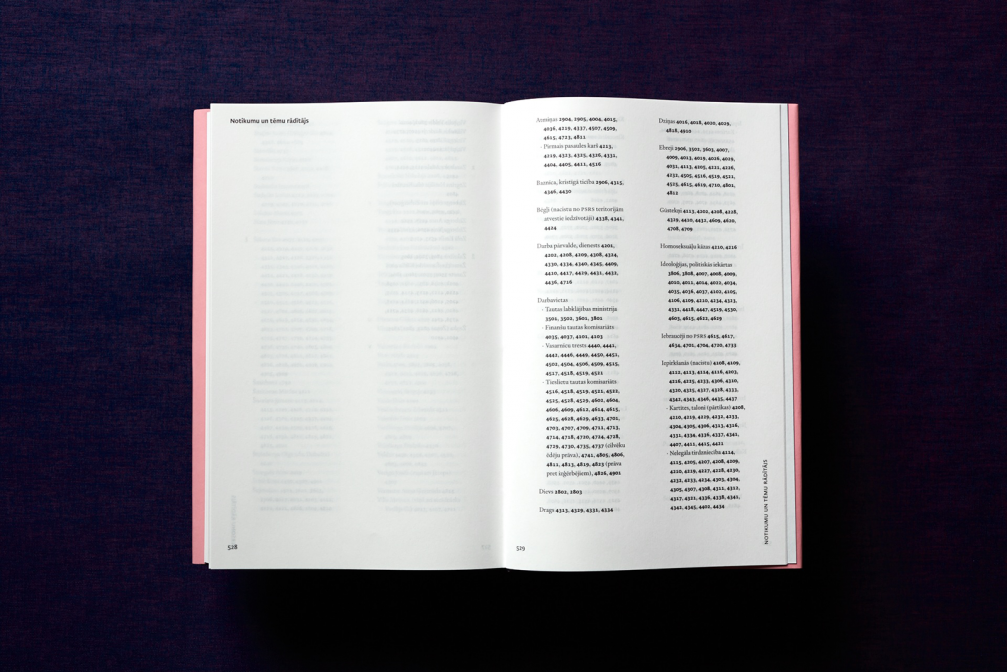
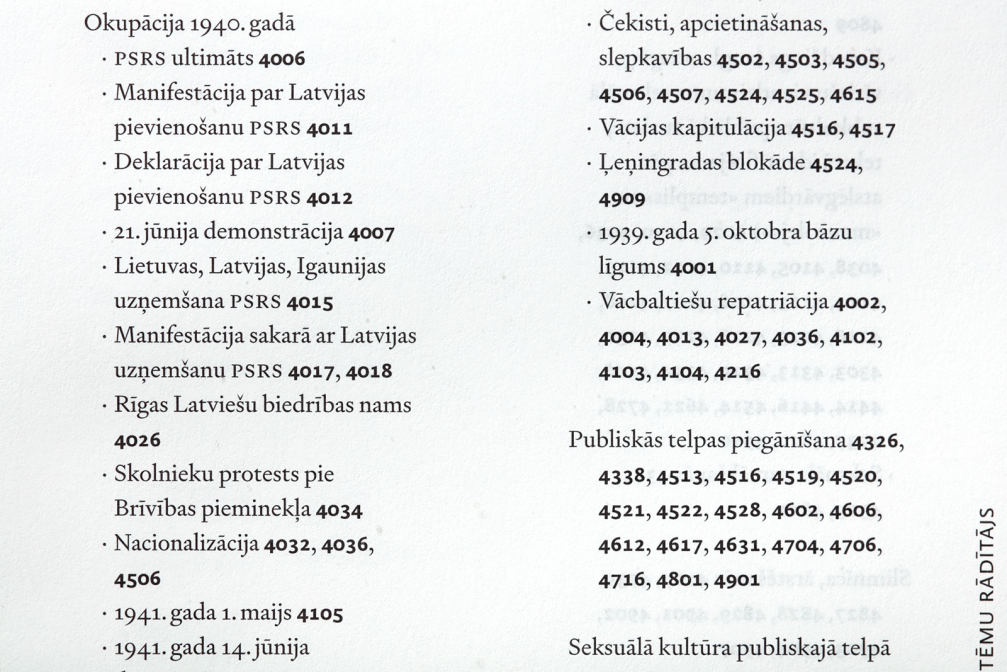
Not only the textual information has been meticulously transmitted into the book, but also the physical and visual impression of the diaries. The edition includes a variety of documents, photographs, and other artefacts from Irbe’s archives, including a copy of the very first journal entry. Each physical medium is reproduced on both sides and in the original size. The book also contains two physical inserts from the journals — a portrait of the actor Rūdolfs Valentīno and a photo from Irbe’s youth. The physicality of the archive fragments and the inserts between the pages of the book conjure up a feeling of a real and very material diary.
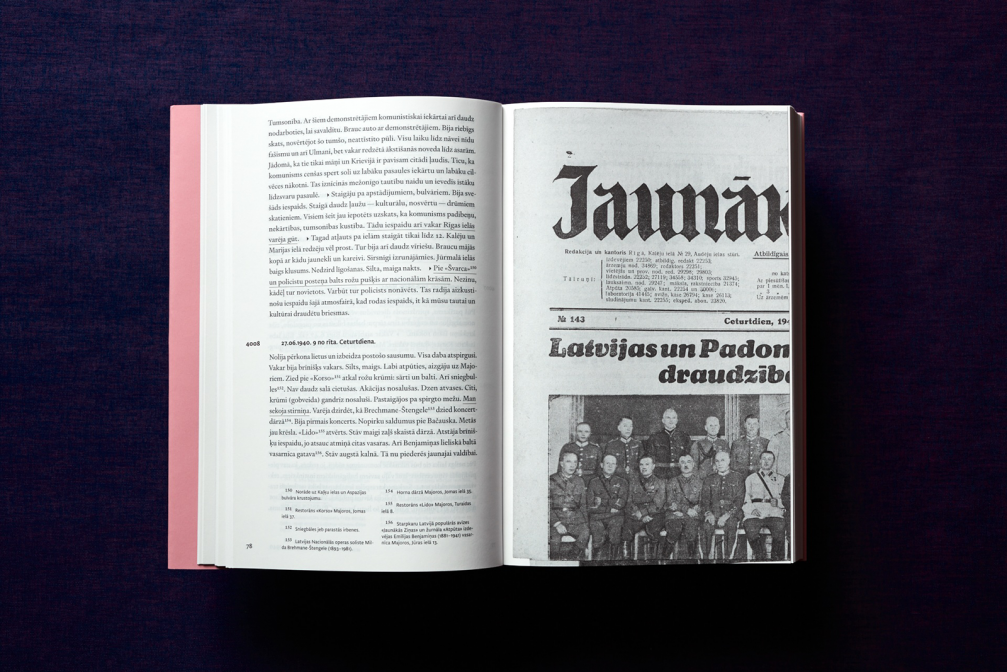
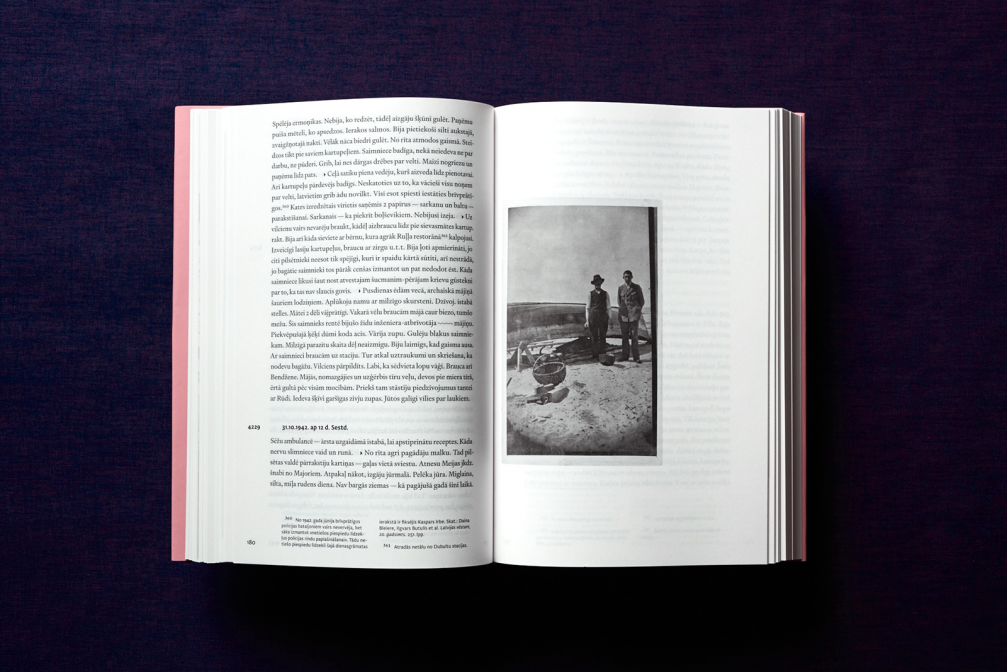
The bright dust jacket hides a cover clad in colour-changing fabric that, depending on the light conditions, varies from a temperate blue to bright pink. As a homosexual in Soviet Latvia, Irbe had to hide his private life for most of his life in order to survive, and the chameleon fabric plays upon this necessity. Although the colour of the dust jacket gives an indirect allusion about Irbe’s hidden life, the quote chosen for it promises a story about a multifaceted character. Through Irbe’s eyes we get a glimpse not only of the life of the LGBT+ community in Soviet Latvia, but also obtain a unique testimony about the everyday life, society, and historical events of his time.
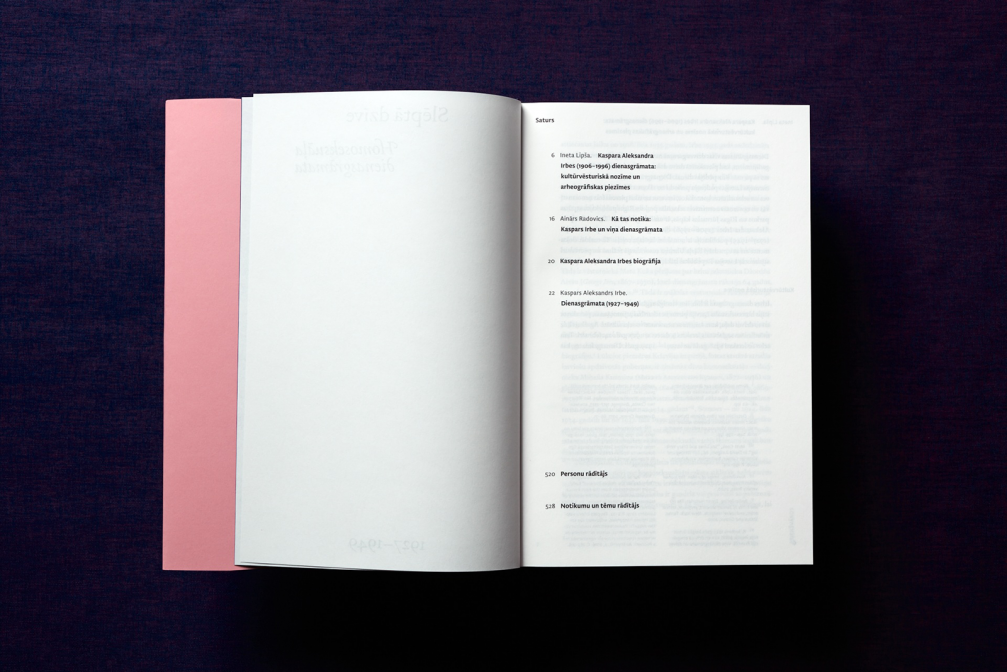
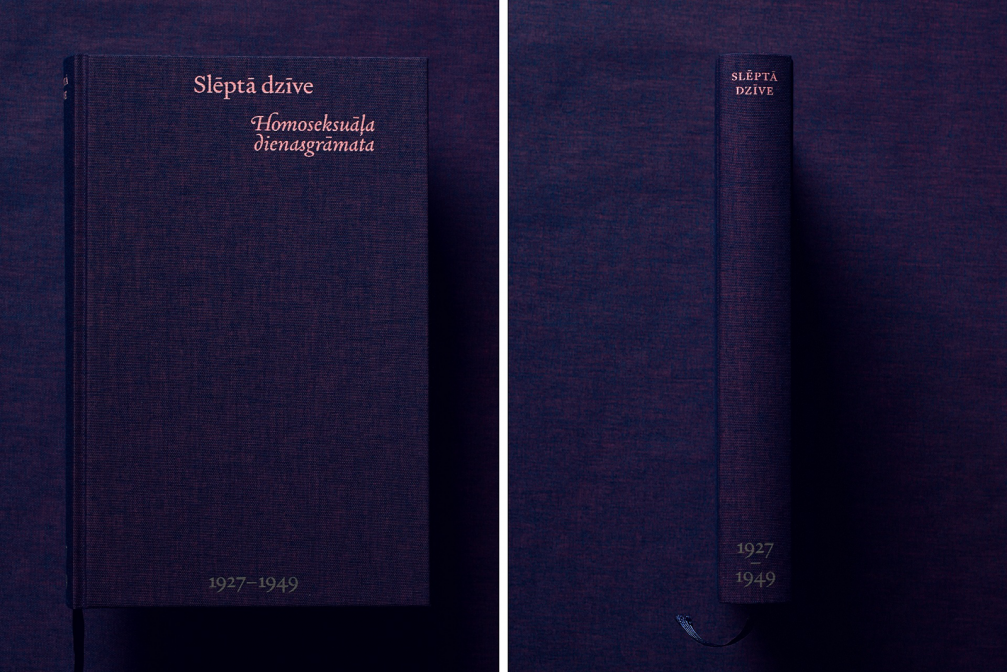
The association Ascendum plans to publish two more volumes of the journals of Kaspars Aleksandrs Irbe, covering the period from 1948 to the author’s death in 1996. The publication of the first volume is supported by the State Culture Capital Foundation, but the bulk of the necessary funds was collected in a crowd financing campaign. The book Hidden life. A Homosexual’s Diary 1927–1949 is available for purchase in all major bookshops in Latvia, while the opening of the book is expected on October 7.
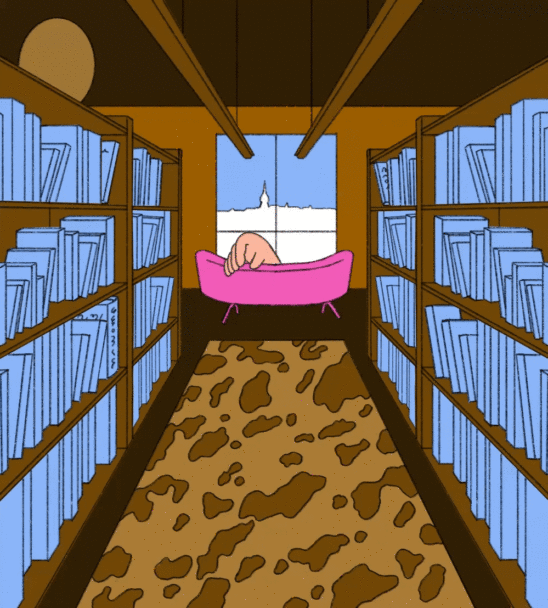
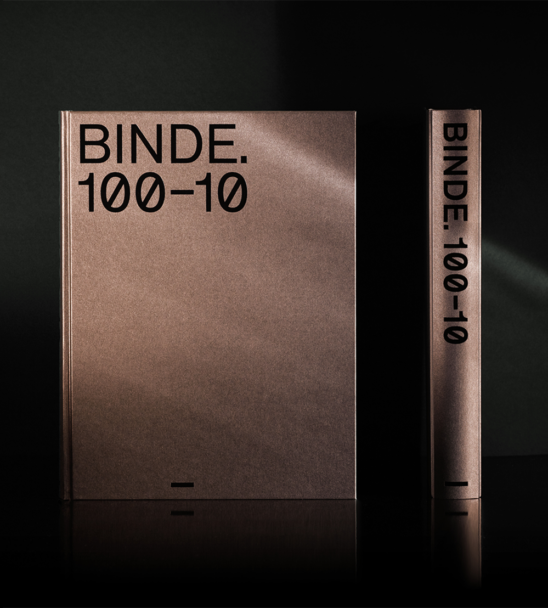
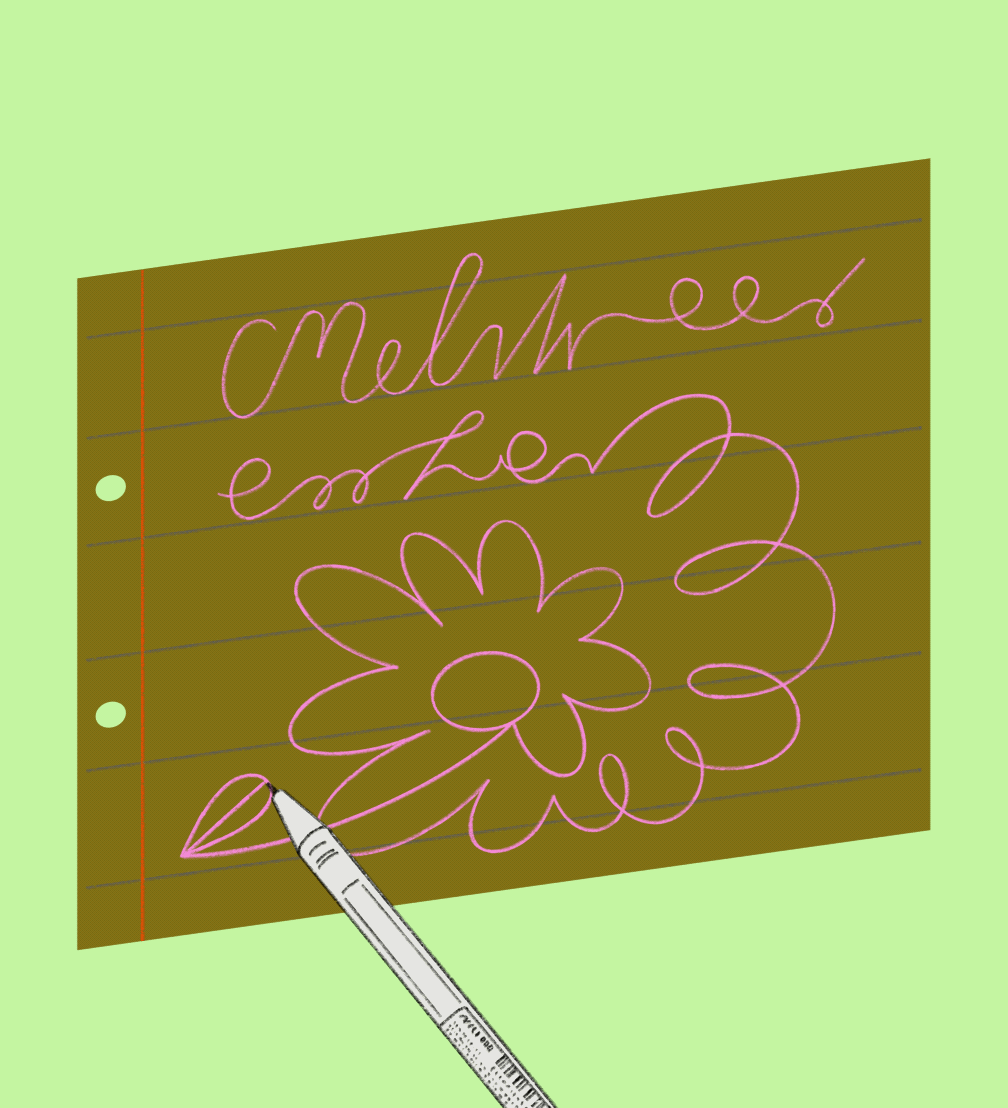
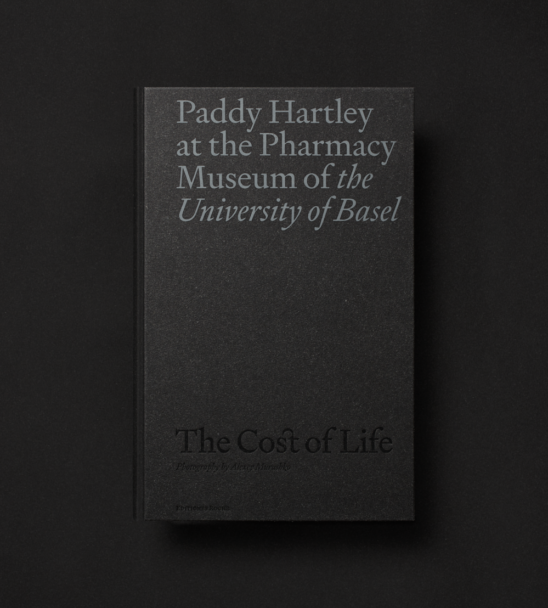
Viedokļi